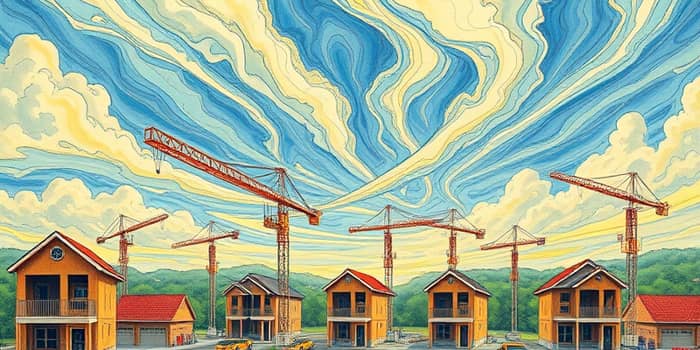
The U.S. housing market entered 2025 facing a reckoning: steep borrowing costs collided with persistent demand, leaving builders and buyers navigating uncertain terrain. Recent data showed a pronounced slowdown in housing starts, with groundbreaking activity slipping to a five-year low in May. Meanwhile, new and existing home sales retreated, and affordability concerns gripped households across income levels. Yet within these challenges lie seeds of innovation and adaptation—opportunities for buyers, builders, and policymakers to forge a path forward.
Central to this market recalibration has been the climb in borrowing costs. The average 30-year fixed mortgage rate hovered near 6.8% in May, cresting just under 7% at peaks. For many prospective homeowners, these levels are prohibitively high for many buyers, stretching monthly payments beyond comfortable limits. At the same time, Fannie Mae’s revised forecasts point to sustained pressures, projecting rates above 6.5% through year-end.
Coupled with the rate lock-in effect reducing activity, these dynamics created a powerful drag. Roughly 82% of existing mortgages carry rates below 6%, leading homeowners to delay listing and purchase decisions rather than trade into costlier loans. Builders, too, felt the impact as buyer traffic thinned, draining enthusiasm from the construction sector.
May’s figures painted a stark picture. Total housing starts plunged nearly 10%, driven by contractions in both single-family and multifamily segments. New home sales sank 13.7%, marking their slowest pace since October 2024. Even existing home transactions fell, slipping 0.7% year-over-year and reflecting the weakest spring buying season in over a decade.
Builders responded with incentives—rate buydowns, flexible financing, and narrower price targets—but the overarching tide of elevated costs proved hard to reverse. Inventory paradoxes emerged: a record $700 billion worth of homes sat on the market, yet entry-level units were scarce. Sellers hesitated to trade out of low-rate loans they currently hold, while buyers struggled to bridge the affordability gap.
While national trends set the stage, regional markets diverged in pronounced ways. The South saw homebuilding surge to levels unseen since the early 1970s, only to confront mounting unsold inventory. In contrast, the Northeast faced more muted construction but greater scarcity of affordable options. The West Coast grappled with cost escalations and land constraints, while the Midwest experienced moderate slowdowns but retained pockets of resilience.
These regional contrasts illustrate both the breadth of challenges and the need for tailored responses. Builders in sunbelt states adjusted by compressing construction timelines; those in high-cost regions experimented with modular and mixed-use developments. Policymakers, meanwhile, weighed incentives for affordable housing and streamlined permitting to ease supply bottlenecks.
Despite headwinds, creative strategies are emerging on both sides of the transaction. Prospective homeowners can explore mortgage alternatives, locking rates through buydowns or adjustable-rate products and prioritizing down payment assistance programs. Shared-equity models and community land trusts also offer pathways to ownership amid tight budgets.
Builders, too, are adapting. From shortening construction cycles to repositioning land, industry players are refocusing on entry-level and workforce housing. Strategic partnerships with community organizations and use of offsite prefabrication help control costs, while transparent pricing builds trust with wary buyers.
Experts anticipate a gradual easing of pressures by mid-to-late 2026, with mortgage rates potentially drifting toward the mid-5% range if inflation remains subdued. Such a shift could unlock pent-up demand and spur a revival in housing starts. Still, the transition will require patience: the share of low-rate mortgages in circulation must naturally diminish before more owners list their properties.
In the interim, the industry can build resilience by embracing flexibility and innovation. Public and private stakeholders have an opportunity to address structural shortages in affordable housing, streamline regulations, and harness new construction technologies. These efforts can transform today’s challenges into tomorrow’s strengths, ensuring that the American dream of homeownership remains within reach.
Amid the data points and market gyrations lies a powerful truth: adversity often sparks change. By aligning incentives, deploying ingenuity, and maintaining a long-term perspective, buyers, builders, and communities can navigate the current slowdown and emerge with a more balanced, inclusive housing landscape. The path forward will not be without obstacles, but it is shaped by the same entrepreneurial spirit that built this nation—proof that, even in the toughest markets, hope and action can lay foundations for a brighter future.
References













